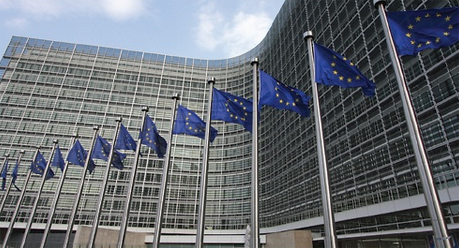
The first contours in a granular mapping of EU green investment have emerged following the launch on Thursday of a groundbreaking tool by the Platform for Sustainable Finance (PSF).
The group of financial experts, which advises EU policymakers, released a framework for monitoring the extent to which capital flows are directed to sustainable investment.
At present, these flows are insufficient, according to PSF and European Commission calculations. However, the extent to which the financing gap is being closed has thus far not been clear. The tool aims to correct this.
“This represents a first and notably significant step in our journey to measure progress and identify areas for improvement,” said Diarmuid Murphy, head of the sustainable finance unit at the European Commission at the launch of the study.
“To be able to track capital flows into sustainable investments and gauge overall progress in mobilising finance towards the objectives of the European Green Deal, we require a robust methodological framework,” he stated.
In 2023, EU regulators already estimated a green financing gap of €620bn per annum to reach the EU Green Deal target of €1.42trn. Policymakers expect the majority of this finance to come from the private sector.
Two types of capital flows
The methodology proposed by the PSF mainly rests on capital flows, with two types of flows considered. One is capital expenditures by real economy entities, which sheds light on progress towards filling the investment gap.
Secondly, the framework considers flows in and from financial markets, an important source of capital to support real economy investments.
The proposed methodology is primarily based on EU sustainable finance regulatory data and definitions. Major data sources suggested to track investment consist of disclosures arising from legislation such as the Corporate Sustainability Reporting Directive (CSRD) and indicators from the related European Sustainability Reporting Standards (ESRS).
“We see this as a periodic effort involving possible annual updates”
Bertrand Magné, co-rapporteur of the Platform for Sustainable Finance
SLBs out for now
In the first instance, public expenditure is excluded from the analysis.
To start with, measurement of financial sector flows will focus on loans, bonds, equity, and investment funds. The PSF said its focus is on primary market instruments from which capital flows reach the real economy more directly.
Instruments claiming particular sustainability features will be measured, such as green bonds and funds disclosing their sustainable investments under the Sustainable Finance Disclosure Regulation (SFDR). At the same time, general-purpose financing – bonds and equity – will be characterised on the basis of the activities of the underlying entity. This includes sustainability-linked bonds (SLBs), which will not otherwise be counted.
According to Helena Vińes Fiestas, Spanish Financial Markets Authority commissioner and chair of the PSF, “while SLBs offer a meaningful opportunity to align sustainable goals with debt financing” the PSF has recommended their temporary exclusion as their inclusion “would necessitate a thorough assessment of the materiality and ambition of SLB targets”.
A successful green transition in the utility sector has already been identified by the PSF’s research.
“There is little scope to finance unsustainable projects in utilities, with a lot of capital expenditure aligned with green goals,” said Bertrand Magné, co-rapporteur of the PSF. However, the heavy industry, mining and chemicals sectors are not yet fully aligned, he stated.
Officials at the launch emphasised the framework is a work-in-progress. Over time, new data are expected to provide increasing and improved information to match financial flows with capital investment.
“We see this as a periodic effort involving possible annual updates,” said Magné.
The Platform is due to release a final report at the end of its mandate, which will include a proposal for operationalising the periodic monitoring of capital flows.






